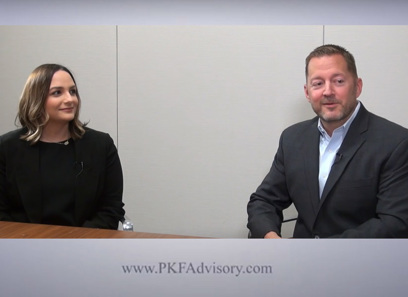Exploring Purchase Price Allocation in Mergers and Acquisitions for Investors
Wiki Article
Essential Principles of Comprehending Purchase Price Allocation in Mergers and Acquisitions
The idea of Purchase Price Allocation (PPA) plays a critical role in the world of mergers and procurements, as it figures out how the complete purchase price is assigned among numerous possessions and liabilities. As we check out the fundamental parts and approaches of PPA, one must take into consideration how these components communicate to form the monetary landscape post-transaction.Interpretation of Purchase Price Allocation
Comprehending purchase cost allocation (PPA) is vital in the context of mergers and procurements, as it involves the procedure of dispersing the total acquisition rate among the numerous concrete and abstract possessions gotten. This allotment is essential for figuring out the reasonable value of the possessions and responsibilities assumed in the deal, which eventually influences the financial declarations of the getting company.PPA normally encompasses a number of elements, consisting of identifiable possessions such as home, tools, and inventory, as well as intangible possessions like hallmarks, licenses, and customer relationships. In addition, it accounts for any type of obligations that the obtaining firm thinks from the target. The allocation process should abide by appropriate bookkeeping criteria, such as IFRS 3 or ASC 805, which mandate fair value evaluations for each recognized possession and responsibility.
The resulting appropriations can considerably influence the acquirer's balance sheet and earnings declaration, influencing depreciation, amortization, and goodwill estimations. Correct execution of PPA guarantees compliance with regulatory requirements and gives openness to stakeholders concerning the financial effects of the procurement. Generally, a distinct PPA procedure is essential for reliable monetary reporting and critical decision-making in the context of mergers and acquisitions.
Relevance of PPA in M&A
The importance of purchase rate allowance (PPA) in mergers and procurements prolongs beyond simple compliance with audit requirements; it plays a pivotal function in forming the economic landscape of the acquiring firm. A well-executed PPA not only mirrors the fair worth of acquired properties and liabilities but additionally influences future economic reporting, tax obligation implications, and calculated decision-making.Exact allowance of acquisition cost aids in determining and valuing abstract assets such as brand equity, client partnerships, and exclusive technologies, which can significantly influence a firm's competitive benefit. These appraisals can affect future disability examinations, thus affecting reported profits and stock performance. An inappropriate PPA can result in financial misstatements, possibly resulting in regulatory scrutiny and reputational damage.
Moreover, PPA is critical for aligning the interests of stakeholders, including financiers, analysts, and banks. Transparency in the allowance procedure cultivates trust fund and can boost the acquiring company's reputation in the industry. Inevitably, a robust PPA procedure offers as a structure for reliable assimilation approaches, assisting in understanding the expected synergies and general success of the merger or acquisition. Thus, the importance of PPA can not be overstated in the world of M&A.

Secret Components of PPA
A comprehensive acquisition cost allowance (PPA) includes a number of vital elements that are important for accurately showing the value of gotten entities. The key element of PPA is the recognition of the total acquisition price, which includes not only money yet also any kind of liabilities assumed and equity tools issued. This overall acquisition price functions as the structure for the allotment procedure.Following, the identifiable possessions and liabilities of the target business have to be evaluated and gauged. This consists of tangible possessions such as residential or commercial property, plant, and devices, along with intangible possessions like trademarks, patents, and client partnerships. Accurately valuing these assets needs a thorough understanding of the target's monetary setting and functional capacities.
Furthermore, goodwill stands for the extra of the purchase cost over the fair value of the recognizable web possessions acquired. Ideal audit requirements, such as IFRS or US GAAP, determine the therapy of these elements, making sure compliance and uniformity in the PPA process.
Methodologies for PPA
Using different methodologies for acquisition cost allocation (PPA) is crucial in guaranteeing that the appraisal of acquired properties and liabilities is both precise and compliant with audit criteria. The most frequently utilized approaches include the earnings strategy, market technique, and price approach.The earnings strategy estimates the worth of a possession based upon the present worth of its predicted future money circulations (Understanding PPA Allocation). This method is especially reliable for intangible possessions like licenses or trademarks, where future profits generation is a vital consideration. Alternatively, the marketplace method contrasts the acquired properties to similar possessions that have actually been sold in the marketplace, enabling an appraisal based upon observed market transactions
The expense technique, on the various other hand, concentrates on figuring out the substitute or recreation price of an asset, less any type of collected devaluation. This approach is especially beneficial for substantial properties and gives a baseline valuation.
Each approach has its staminas and is commonly made use of combined with others to triangulate an accurate value. Selecting the appropriate method depends on the nature of the assets acquired, the available data, and the particular situations bordering the purchase, making certain a thorough and defensible PPA procedure.
Usual Obstacles in PPA
While the methods for acquisition cost allotment (PPA) offer a structured structure, a number of typical difficulties can complicate the process. One substantial obstacle is the assessment of intangible properties, such as brand equity and consumer partnerships. These properties often do not have a clear market cost, making it challenging to determine their reasonable worth accurately.Another obstacle occurs from the integration of financial data from the gotten entity, which may involve irregular accountancy practices and differing reporting requirements. Understanding PPA Allocation. This discrepancy can bring about problems in balancing financial declarations and accurately connecting values to specific possessions and responsibilities
Furthermore, the subjective nature of particular assumptions made use of in PPA can introduce prejudice. For instance, estimates associated to future capital and price cut rates are naturally speculative, and small modifications in these presumptions can result in dramatically various evaluations.

Conclusion
To conclude, Purchase Price Allocation (PPA) plays a crucial function in mergings and purchases, making sure exact assessment of substantial and abstract assets according to well established accounting standards. By properly recognizing and valuing assets and liabilities, PPA improves transparency and fosters stakeholder count on. Employing various methods can address typical challenges in the valuation process, ultimately adding to informed financial decision-making and the integrity of monetary reporting adhering to a purchase.Report this wiki page